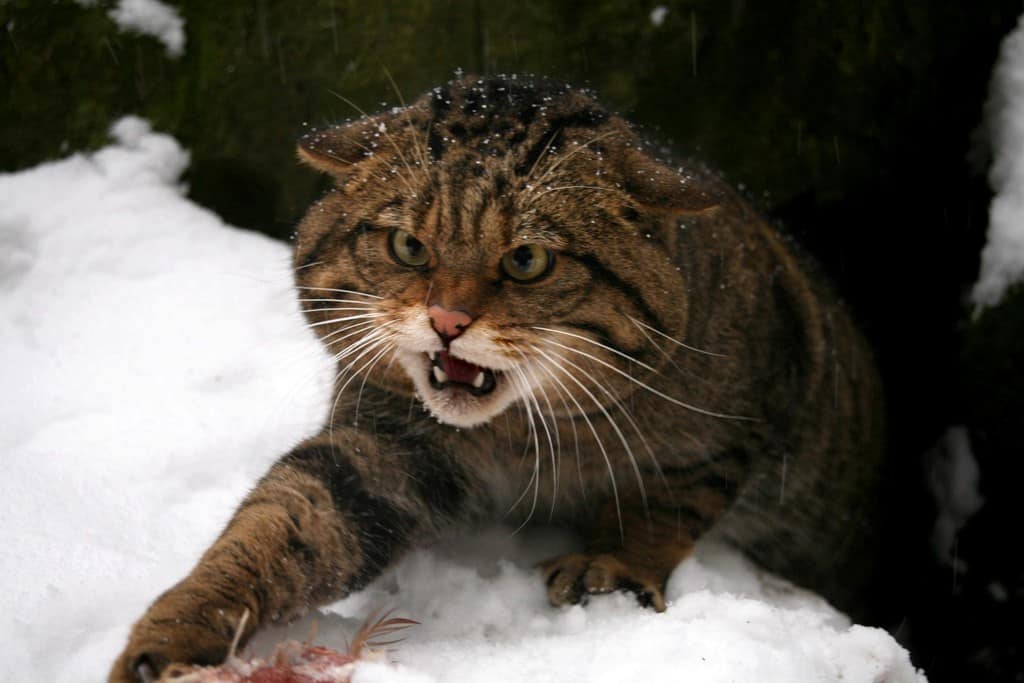Conservation group Wildcat Haven, which has spearheaded fieldwork efforts over the last decade to save the Scottish wildcat at sites across the Highlands, has launched the British Wildcat Project: a plan to reintroduce wildcats into the Scottish-English border region.
Focusing first on Galloway in the south west of Scotland, the population will be encouraged to spread across Galloway, Borders, Cumbria and Northumberland, creating a new British wildcat population group. This brings with it the prospect of wildcats being present in England for the first time in 300 years after it was wiped out as a result of human persecution and habitat loss.
“The British ecology needs a wildcat in it,” explains Dr Paul O’Donoghue, Chief Scientific Advisor with Wildcat Haven, “and wildcats fit in perfectly, helping to control species like rabbit and actively avoiding conflict with humans.
“The Highlands can’t afford to lose any Scottish wildcats so we’ll be looking to healthy, wild-living European populations, and using them to re-establish a British wildcat population on both sides of the Scottish-English border.”
Survey and research work has just begun in Galloway Forest, set in the remote and wild south-west corner of Scotland, which offers a mixture of natural and commercial forestry connectivity all the way across the border to Kielder Forest in Northumberland.
“We’ve seen that wildcats can really thrive in man-made forests, and an important part of our research is understanding how we can create a sustainable population in this environment. The Galloway-Northumberland border region is often overlooked but this is one of the most well connected and diverse habitats in the UK, and certainly rivals the Highlands for biodiversity potential.”
The plan already has considerable landowner support coming from Gresham House Forestry, one of the largest owners of forestry in the UK and the Galloway region.
Jason Sinden, Director of Forestry, comments; “Gresham House manages almost 140,000 acres of forestry assets in the border region. These forests are managed to produce a sustainable supply of timber and this helps to create almost ideal habitats for a range of native woodland specialists, such a red squirrels, badgers and roe deer. The forests are now being re-colonised by pine-martens and we hope that the habitat can also be suitable for the wildcat, which is such an important component of forest eco-systems. We will be working with Wildcat Haven to identify appropriate sites for release and monitoring.”
The British Wildcat Project is part of a comprehensive strategy being developed by Wildcat Haven, focused on connecting Scottish wildcats from their primary Highlands fieldwork areas and restoring a healthy population of wildcats to the Scottish Southern Uplands which can spread naturally across the border in one of the UK’s least populated regions.
“Wildcats once lived across the UK,” adds O’Donoghue, “deforestation was the thing that wiped most of them out, but that’s a trend which has reversed considerably over the last century. There’s an incredible amount of space from Edinburgh and Glasgow all the way down to Leeds, York and the proposed Northern Forest project, and it’s crying out for the wildlife which lived there in the past.
“The wildcat is the UK’s most endangered animal, and it’s probably the most charismatic and iconic species that has managed to cling on here against all odds; they’re incredible survivors and I have no doubt they will thrive in the forests of the Southern Uplands and Northern England. The British Wildcat Project is the beginning of a conservation and rewilding mega-project.”






